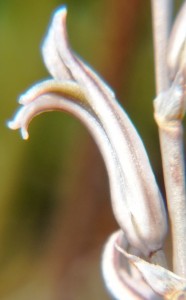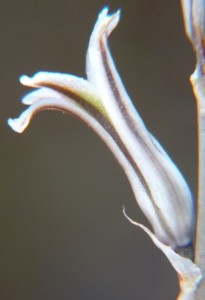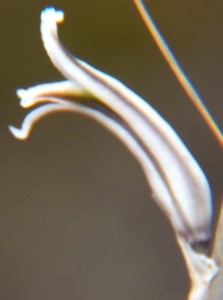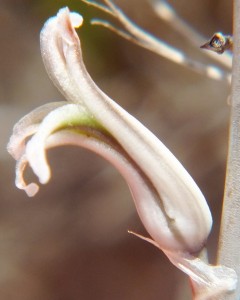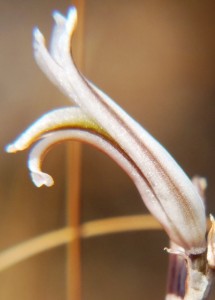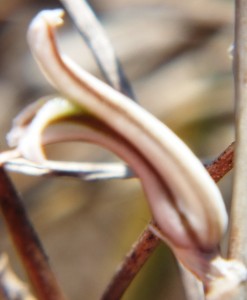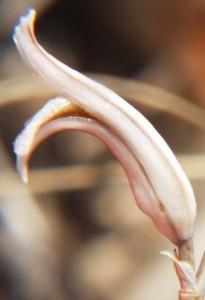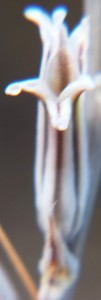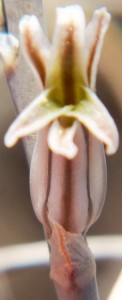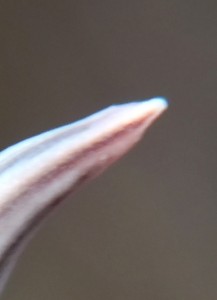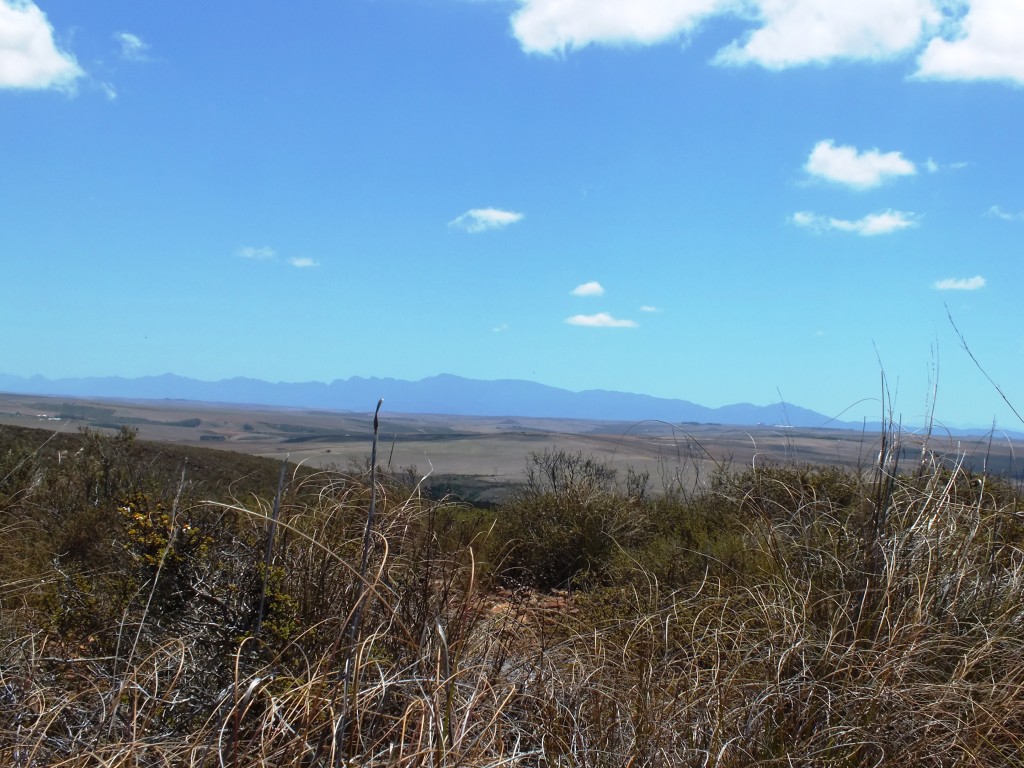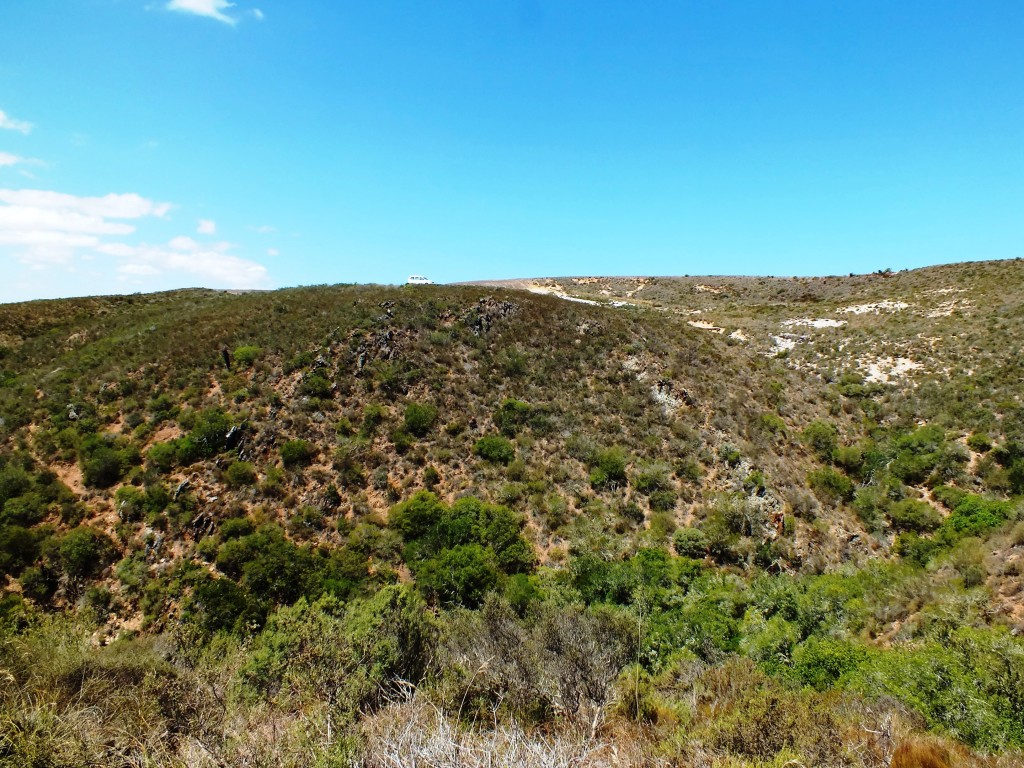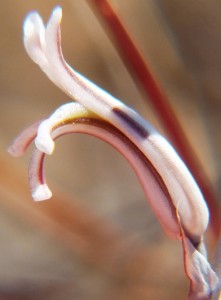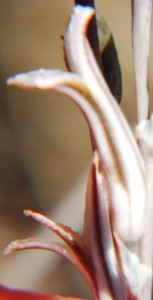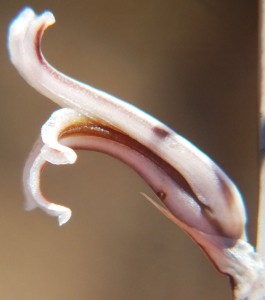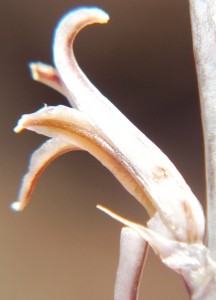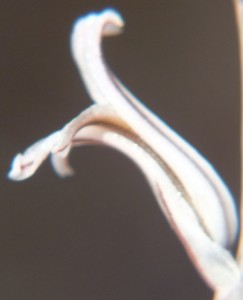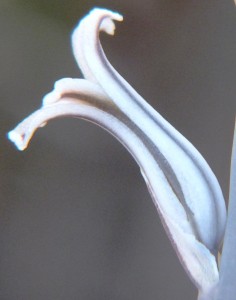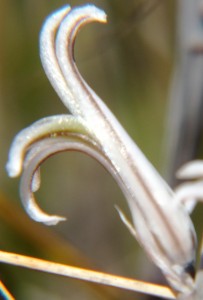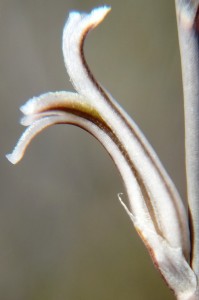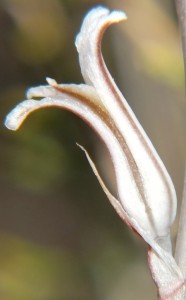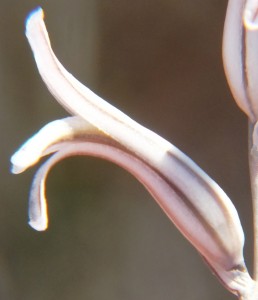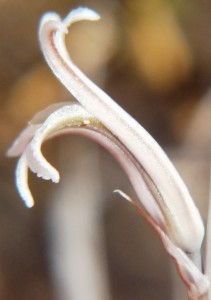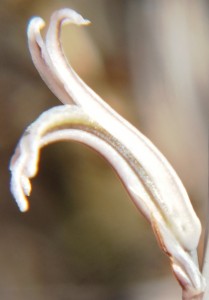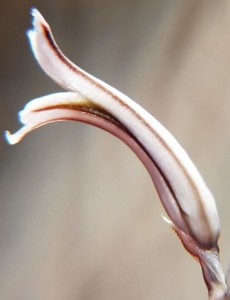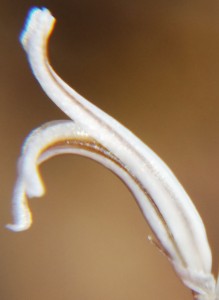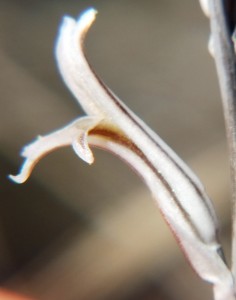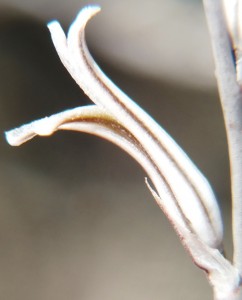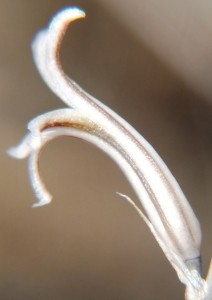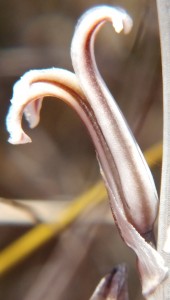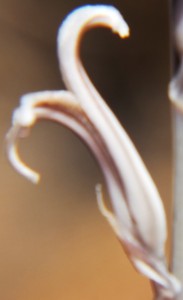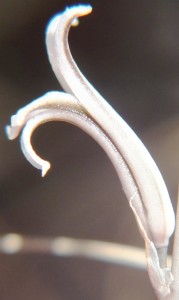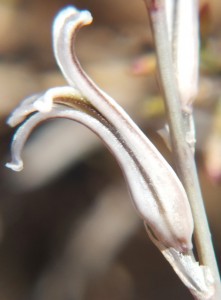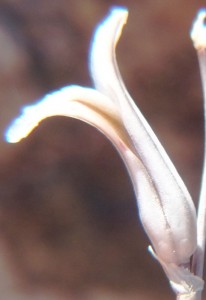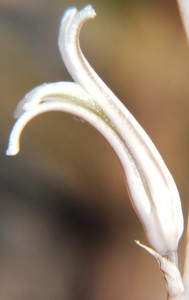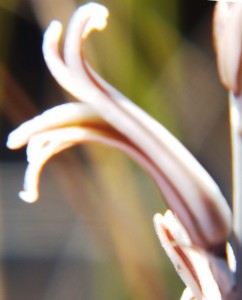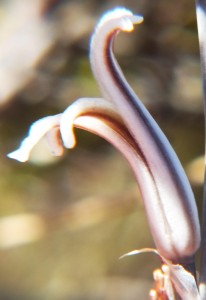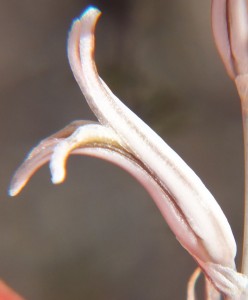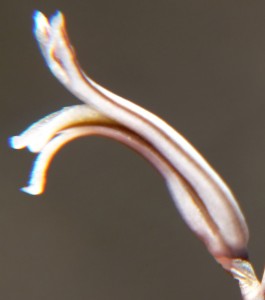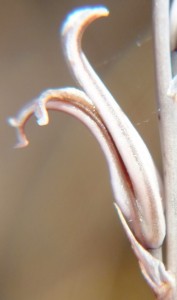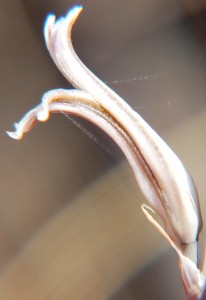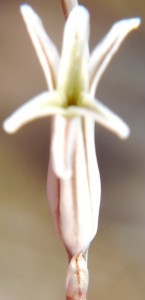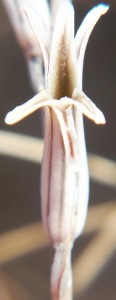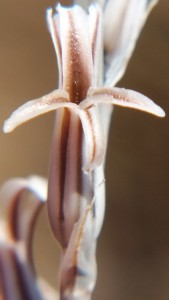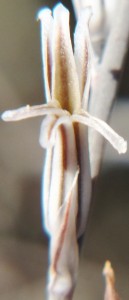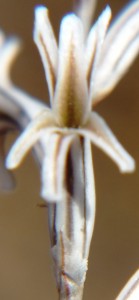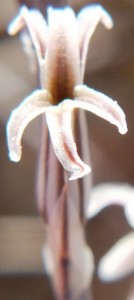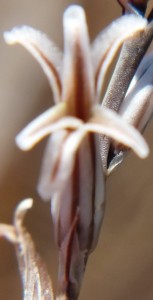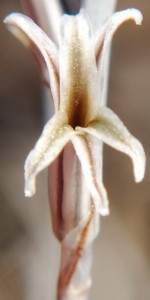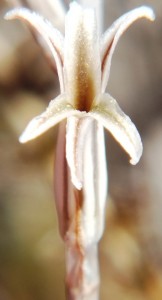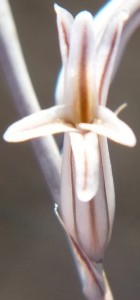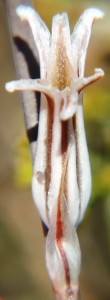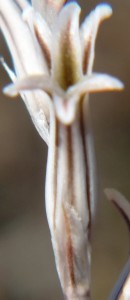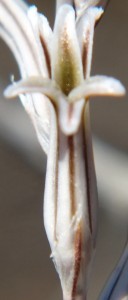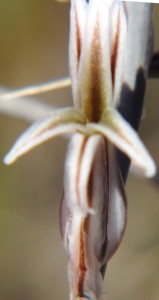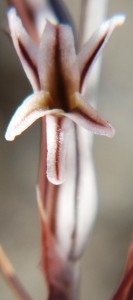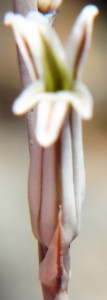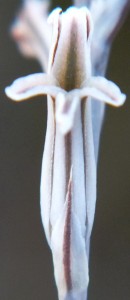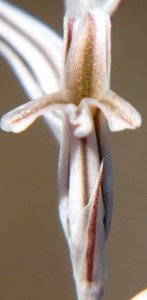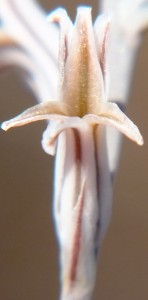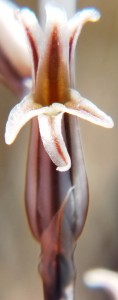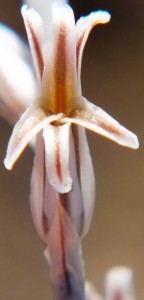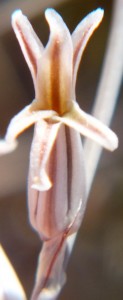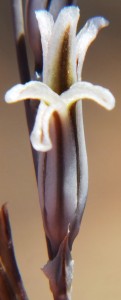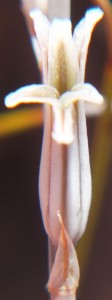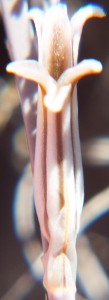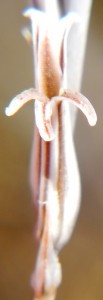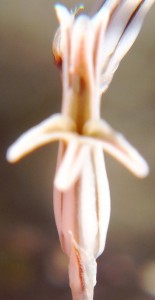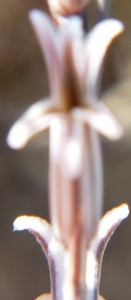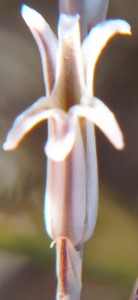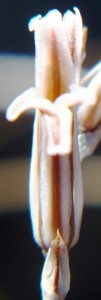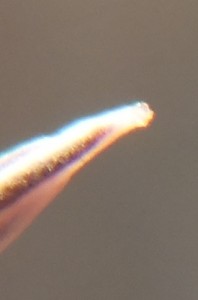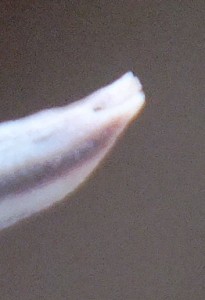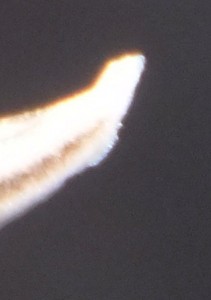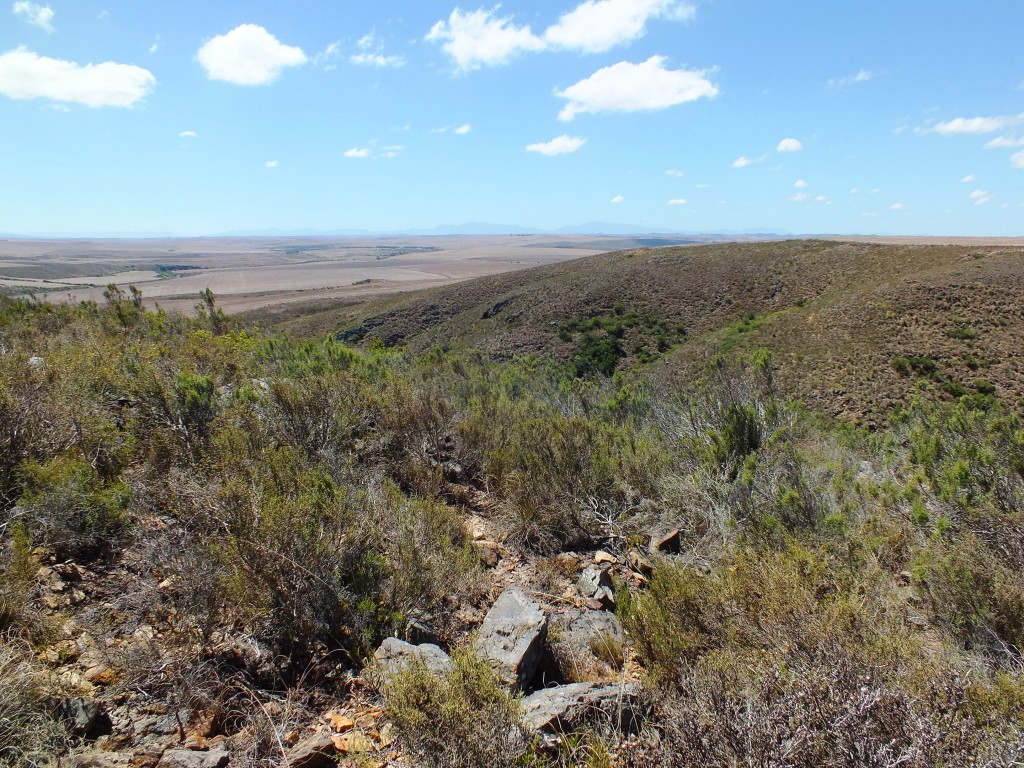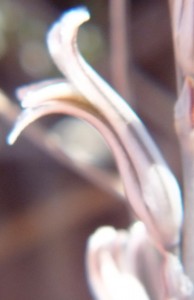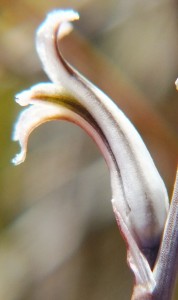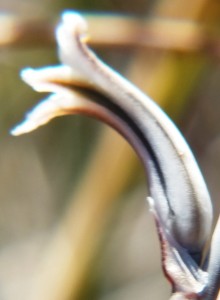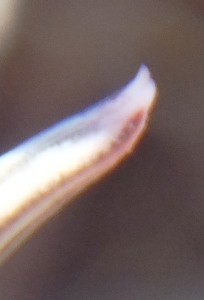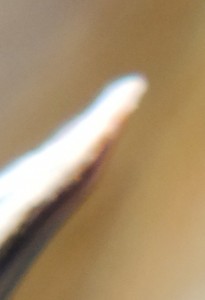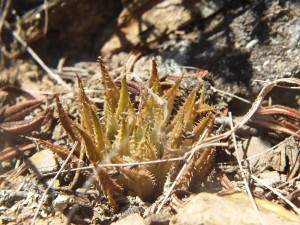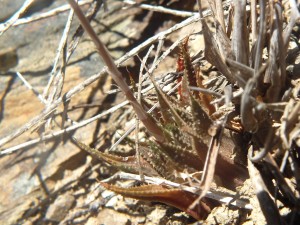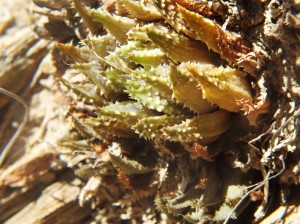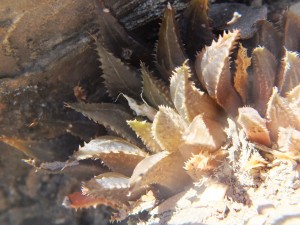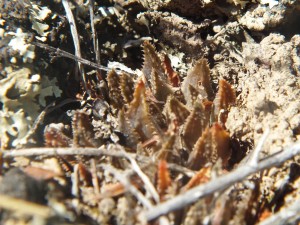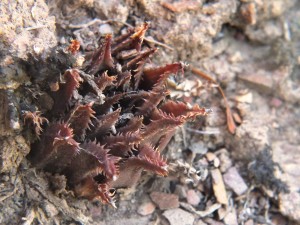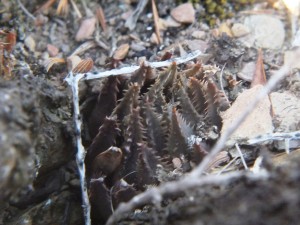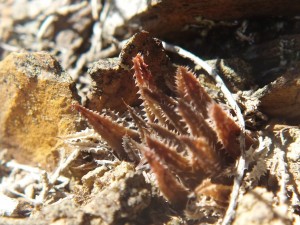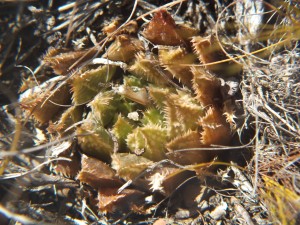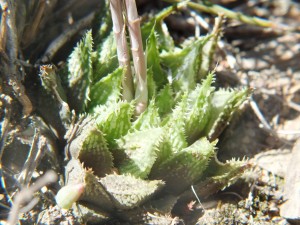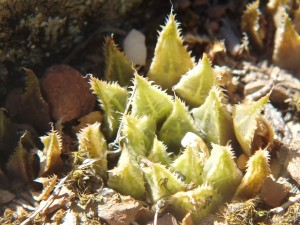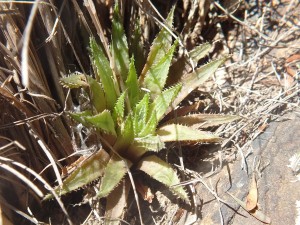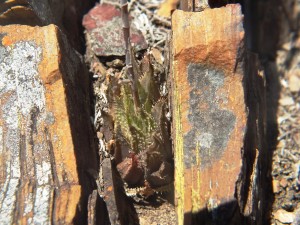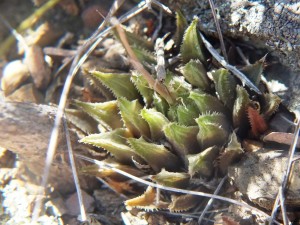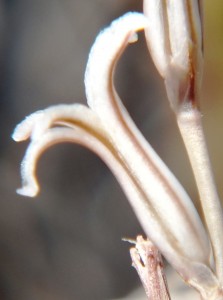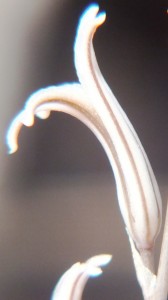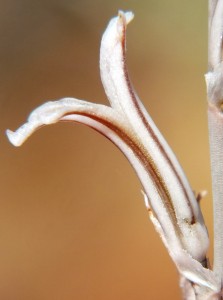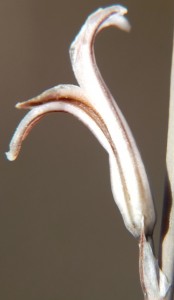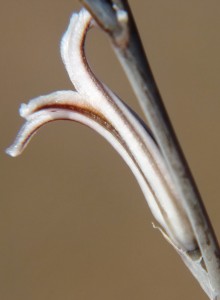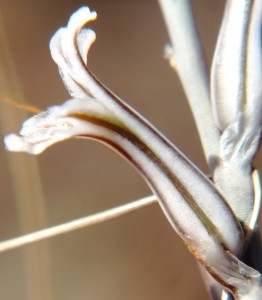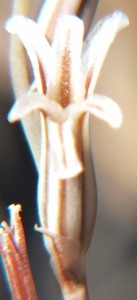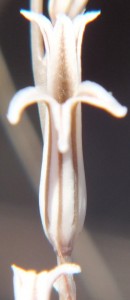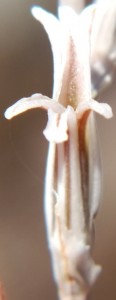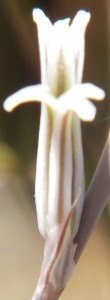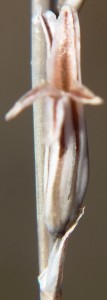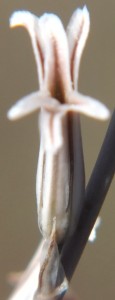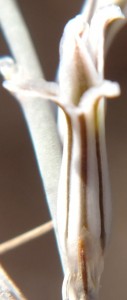Appendix 9 to Vol. 8 Haworthia Update – A report on Haworthia mirabilis and Haworthia rossouwii ‘minor’, Rooivlei, NNE Bredasdorp.
In Appendix 8, I explain some of the rationale of my use of names. A detailed report on H. mirabilis can be found in Haworthia Update Vol.3. and in various chapters of the subsequent Updates. It is shown why I consider the possibility that H. mirabilis and H. retusa are in fact the same species.
In this report I will show just one population of many from Napier northwards and westwards for which no broad name exists. There is simply a transformation from elements that I refer to as H. mirabilis ‘subtuberculata’ in Appendix 8, to a very wide range of populations in the central Southern Cape. Both the names “maraisii” and “heidelbergensis” have been applied to populations in this area. The name H. maraisii var. simplicior from Napky may even be relevant but its application, simply irrational.
The populations for which data is presented here are…
- 7334 H. miriabilis NE Bredasdorp
- 6638 H. miriabilis Rooivlei
- KG36-70 H. miriabilis ‘minor’ Rooivlei
- 7821 2013 H. mirabilis x rossouwii ‘minor’
- 7822 H. miriabilis Rooivlei E of Rd
- 8044 H. miriabilis with H. rossouwii ‘minor’ KG36-70
- 8045 H. rossouwii ‘minor’ Rooivlei
The population 7334 H. mirabilis is covered in a general way by the name “maraisoid” that simply denotes smaller darker green versions of H. mirabilis. It is not accurate and the terms “floribundoid” and even “heidelbergensoid” are applicable. A complication among many is “hammeroid” for what appears to me as introgression of H. mutica with H. mirabilis. It is just not possible to simplify and summarise the range of populations and variants that lead on from this close to Bredasdorp (and “sublineata”) on to Rooivlei, then north and eastwards to eventually cover “hammeri”, “bobii”, “paradoxa”, “jakubii”, “Windsor”, “magnifica”, “atrofusca”, “toonensis”, “scabra”, “vernalis” and so on ad infinitum. So these pictures together with 7822 just serve as a reference point for what follows.
1. MBB7334 Haworthia mirabilis, NE Bredasdorp


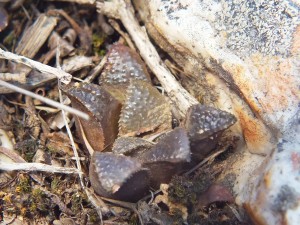
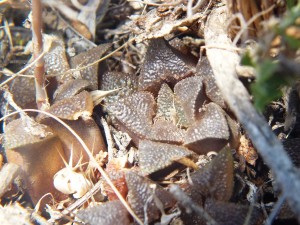

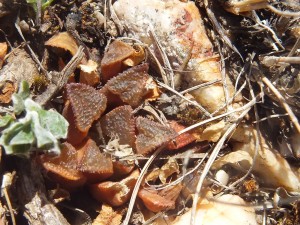
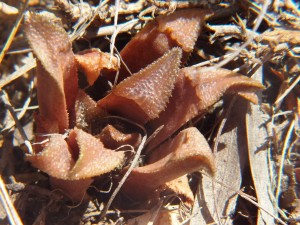
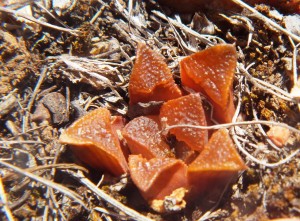
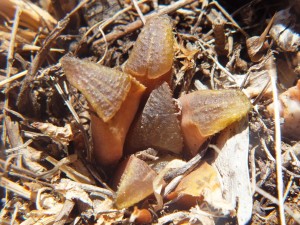
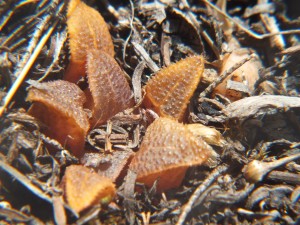
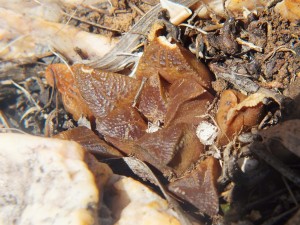
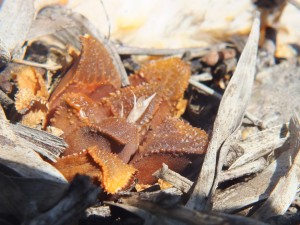
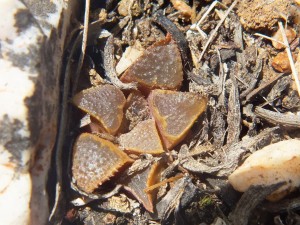

It is Rooivlei approximately 26km NE Bredasdorp that concerns me here. It is quite a high-lying area in the wheat growing area of the southwestern Cape. The geology is primarily Bokkeveld shale with inselbergs of later tertiary origins. At Rooivlei the highpoint has tertiary remnants and the Bokkeveld strata include sandstone among the truly clay derived shales. While the vegetation is broadly renosterveld, there is even a remnant of what Acocks’ described as Valley Bushveld. Curiously is the presence of Acrodon quartzicola first described from there as well as Gibbaeum austricola much more widely distributed even to southwest Heidelberg. From the Haworthia aspect, H. marginata is present. It is the presence of a vicariant population of H. retusa ‘turgida’ that is really odd because it is known again about 40km away to the east and in the Breede River river channel.
What is significant is a plant illustrated as no 12 in 6638. I have seen a plant just like this where H. mutica occurs in the immediate vicinity of H. mirabilis at Klipbankskloof about 20km north of Rooivlei. The illustration referred to my well be a hybrid involving H. retusa ‘turgida’. H. mutica is not known closer than Hasiesdrift (Soesriver) about 6km away.
2. MBB6638 Haworthia mirabilis, Rooivlei
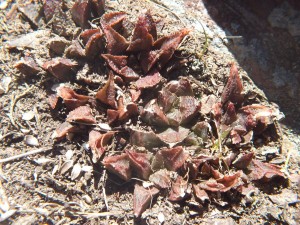
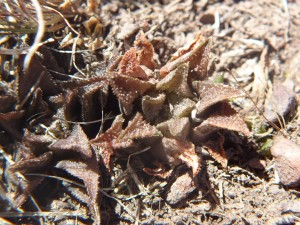
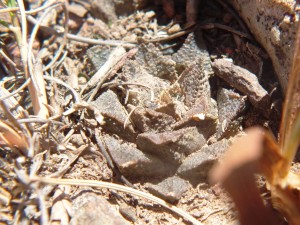
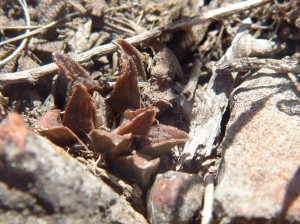
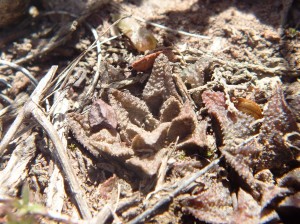

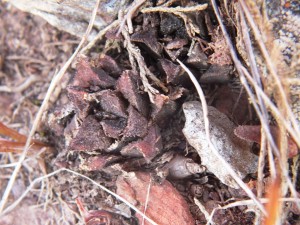
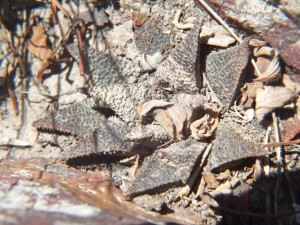
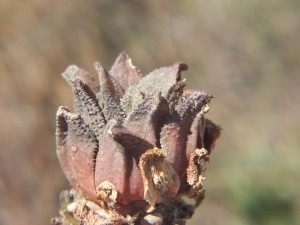
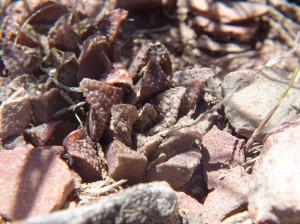
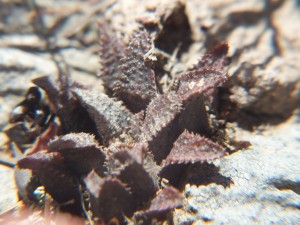
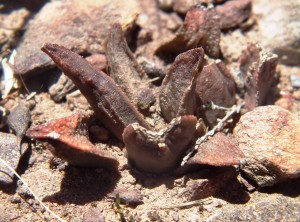
Still more significant now is what I refer to formally as H. rossouwii var. minor. This is KG36/70 originally described by me in my Revision of 1999 but as H. heidelbergensis var. minor. I did explain at the time that there were similarities to H. mirabilis var. sublineata. Since then when I did not know all that much, I have explored a great deal and it is clear that the greater picture is that H. heidelbergensis is truly a variant of H. mirabilis. Because the variant ‘minor’ occurs with H. mirablis it forces a rethink. I did this eventually when H. rossouwii was re-discovered at three locations north-northwest and north of Bredasdorp (forcing the abandonment of the name H. serrata) and not very far from Rooivlei. This is really odd in respect of the distribution and variability of Haworthia because I had described H. serrata from near Heidelberg far to the east. I now have records for 12 populations in that area. This distribution brackets that of ‘minor’. My suggestion thus was that it was better a variant of H. rossouwii than H. mirabilis that now included H. heidelbergensis.
3. KG36/70 Haworthia rossouwii var. minor, type locality


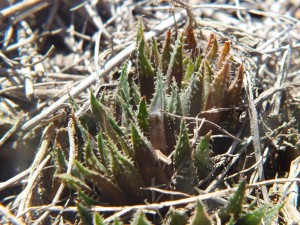
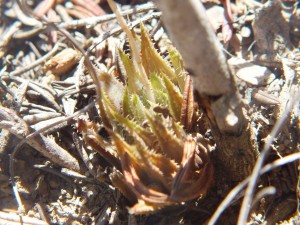
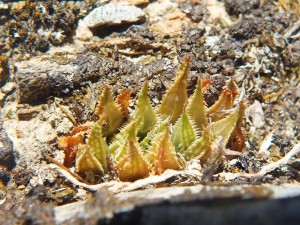

4. MBB7821 Haworthia mirabilis x rossouwii ‘minor’
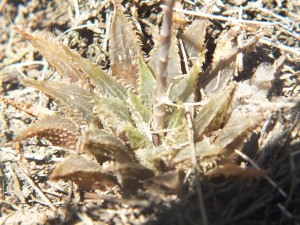

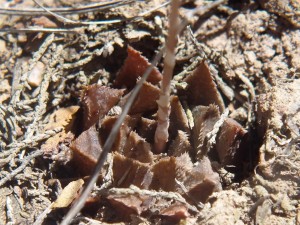
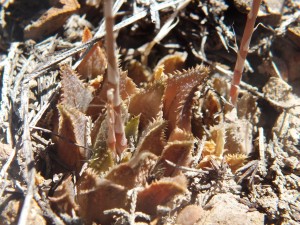
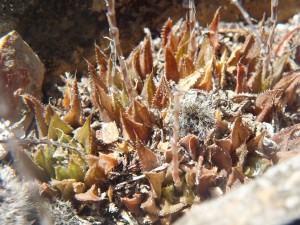
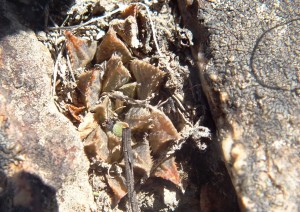


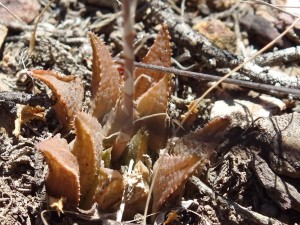
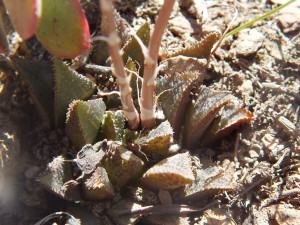

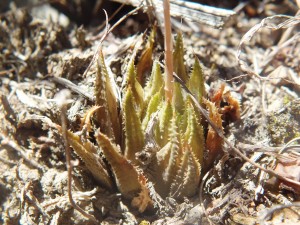

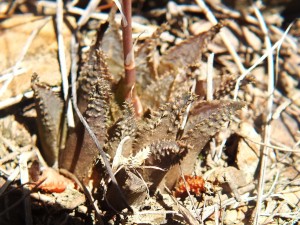
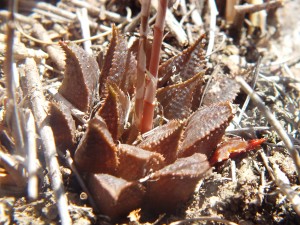
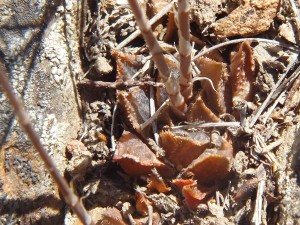
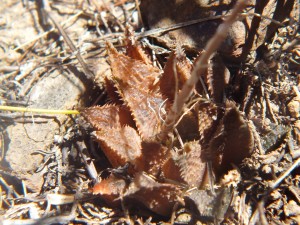
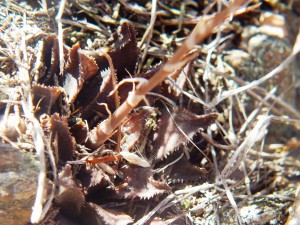

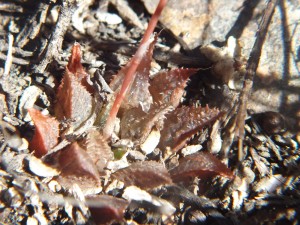

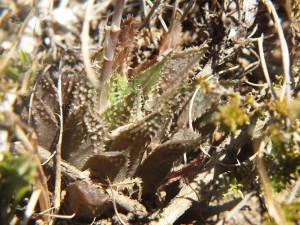

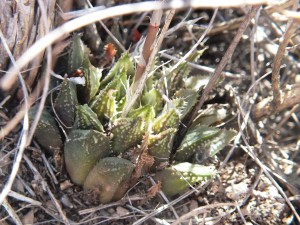
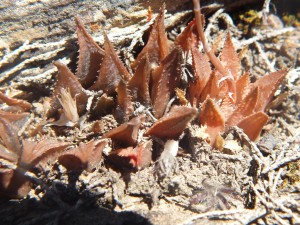
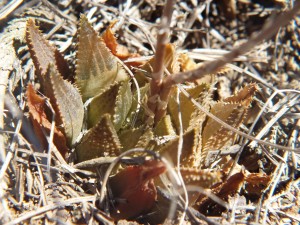
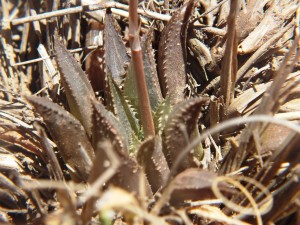
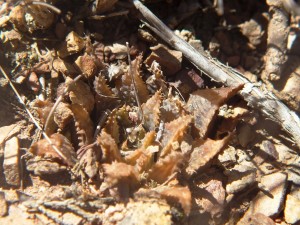



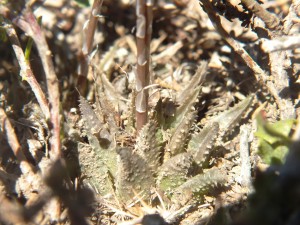
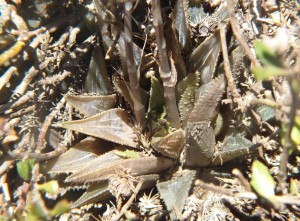
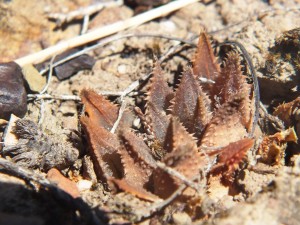
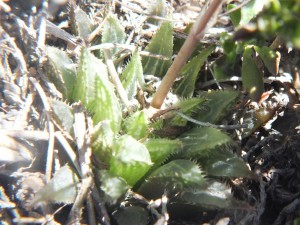

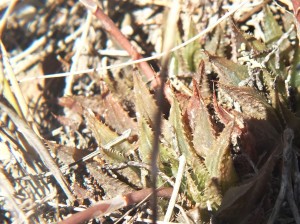
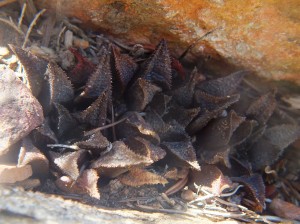
A few years ago I revisited Rooivlei to assess the presence of H. marginata there. I did not find it, but instead noted a population 7821 west of KG36/70 that was very unusual and I suspected it had something to do with both H. mirabilis and H. rossouwii ‘minor’. The object of my recent visit to Rooivlei was to examine this a bit more closely with H. mirabilis in flower. I do not have a record for the flowering time of H. rossouwii ‘minor’ but have memorised it as November. In my visit of 12th Feb. Almost the first plants we found were 2 plants of H. mirabilis (8044) in flower in the immediate vicinity of KG36/70 that was not in flower. The population (7821) west of this is very extensive and the plants extremely variable. They were mostly in flower and there were odd large plants suggesting hybridization with some other species. To the northwest we again found plants (8045) like those at KG36/70 in the same more prominent vertical shale ridges as at the original locality. There was an indication that these plants were not flowering in synchronicity with 7821 and had in fact already flowered. But the plants overall were intensely variable as can be seen from all the illustrations.
5. MBB7822 H. mirabilis Rooivlei, east of Road
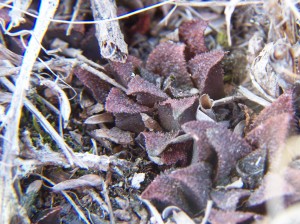
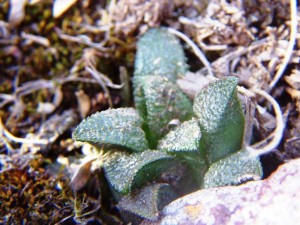

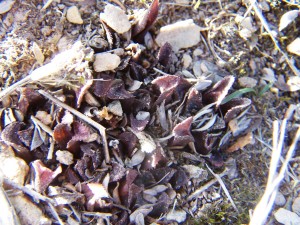
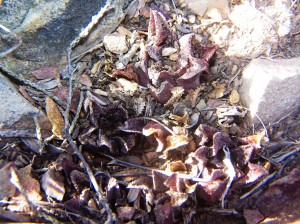

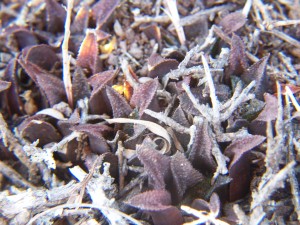
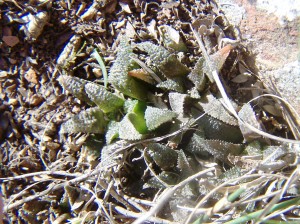
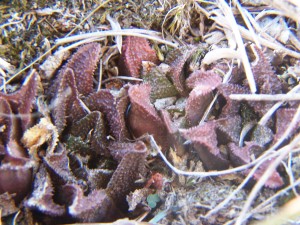
6. MBB8044 H. mirabilis with H. rossouwii ‘minor’ KG36-70
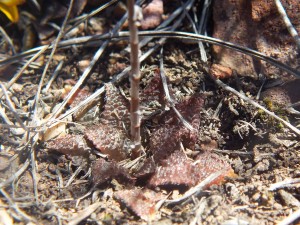
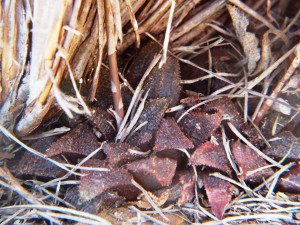
7. MBB8045 H. rossouwii ‘minor’ Rooivlei NW of type locality
I therefore hypothesize again that what is occurring at Rooivlei was/is introgression of H. rossouwii and H. mirabilis. The area is quite extensive and I have not explored it in its entirety. I would not be surprised if H. rossouwii in its more “typical” form is found there.
Acknowledgement.
I would like to thank Mr Francois Uys for access to Rooivlei. Florent Grenier accompanied us there. Lawrence Loucka kindly and patiently brought some loose ends together.


